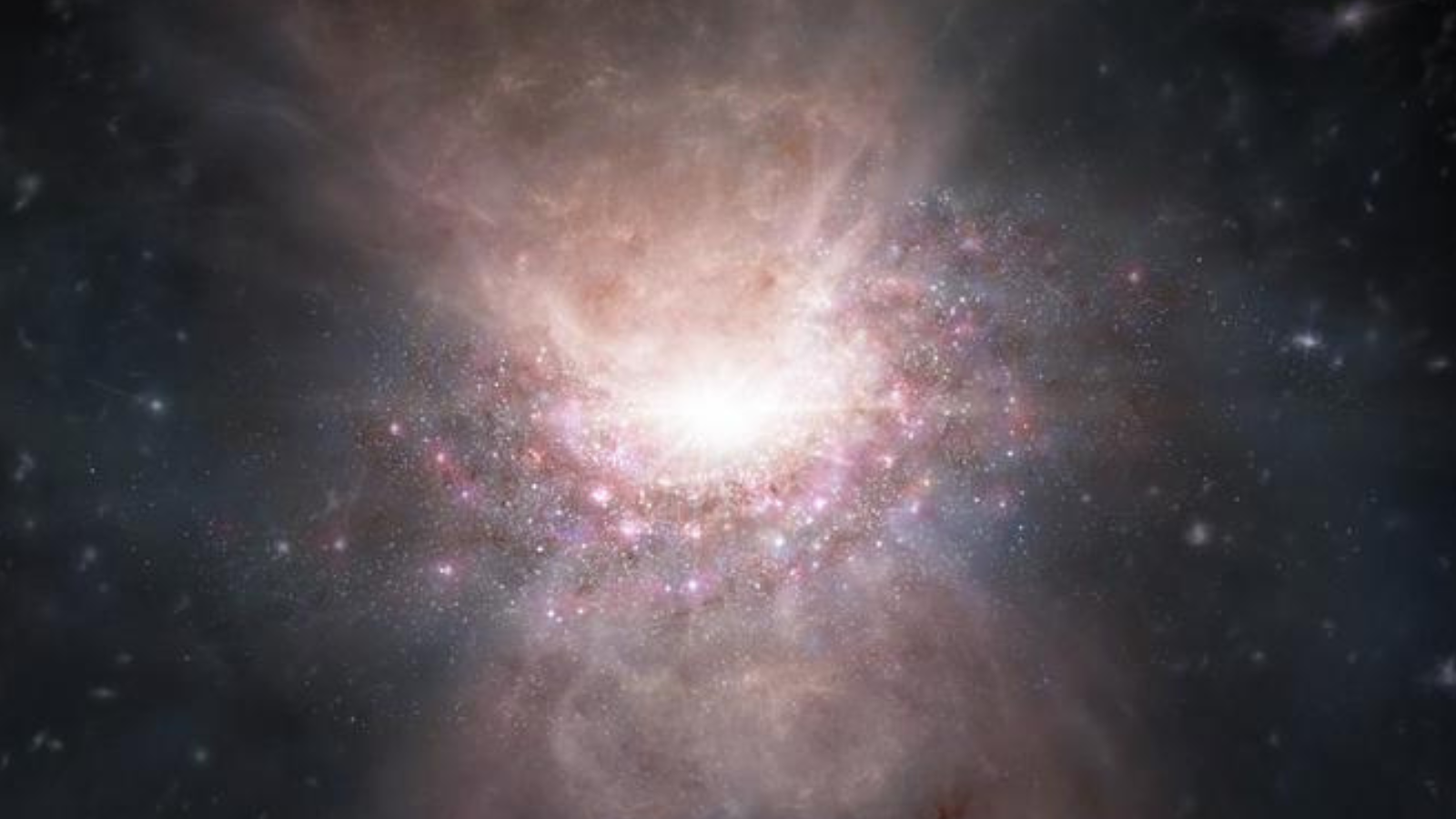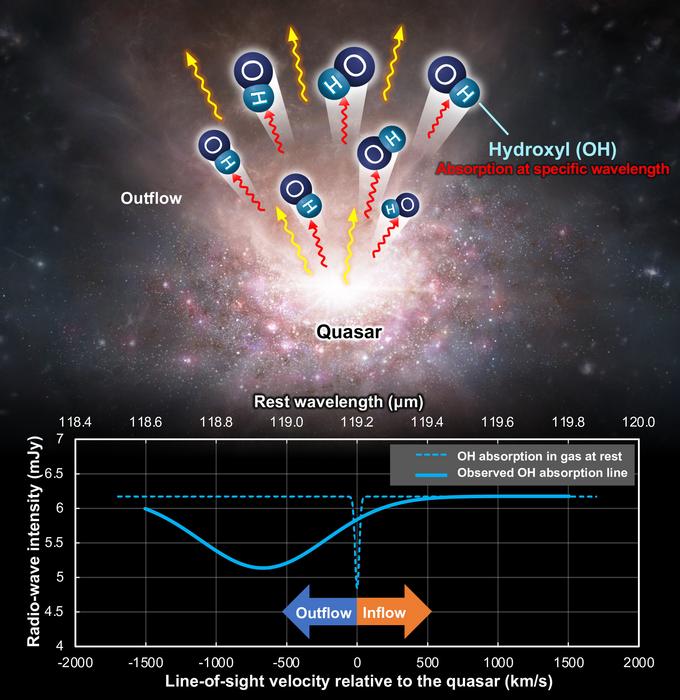
Astronomers have discovered a quasar, powered by a supermassive black hole, in the infant universe. Strikingly, this quasar appears to be spewing out molecular gas, the raw material needed to form new stars.
The discovery helps to confirm theories about how the star formation in some galaxies seems to have slowed to almost a complete halt.
The quasar, dubbed J2054-0005, was observed by the Atacama Large Millimeter/submillimeter Array (ALMA) in Northern Chile. We see it as it was around 12.8 billion years ago, when the universe was less than 1 billion years old.
Quasar, short for "quasi-stellar radio source," is a name given to compact regions at the hearts of some active galaxies where a feeding supermassive black hole superheats surrounding matter and launches powerful jets of this matter to cause incredibly bright light emissions.
Appearing as point-like sources of light-like stars, when quasars are seen at vast distances, they can be used to investigate the conditions found in the early universe. Such regions have long been suspected of strongly influencing the galaxies that surrounding them, but scientists say this is the first time we've seen hard evidence of the suppression of star formation driven by an outflow of molecular gas in an early universe, quasar-host galaxy.
Related: Astronomers witness 18 ravenous black holes ripping up and devouring stars
Stars form in vast clouds of molecular gas when a small region becomes over-dense and collapses under its own gravity. This pre-stellar blob of gas continues gathering mass from the cloud, eventually becoming a protostar. The protostar continues to harvest gas and grow until it is massive enough to trigger the nuclear fusion of hydrogen to helium at its core, the process that defines a full-fledged star.
The richer a galaxy is in molecular gas, the more intensely it can birth stars with high concentrations, leading to a vast number of stars being produced during so-called "starburst" periods. Conversely, if this gas is pushed out of a galaxy into intergalactic space, faster than it can be consumed by the process of star formation, these so-called molecular outflows suppress star formation.
"Theoretical work suggests that molecular gas outflows play an important role in the formation and evolution of galaxies from an early age because they can regulate star formation," Dragan Salak, team co-leader and an assistant professor at Hokkaido University, said in a statement. "Quasars are especially energetic sources, so we expected that they may be able to generate powerful outflows."
In the shadow of a quasar
J2054-0005 was chosen as the observational target to investigate these outflows and their effects because it is one of the brightest quasars in the very distant universe, according Takuya Hashimoto, the team's co-lead and an assistant professor at the University of Tsukuba.
ALMA, meanwhile, which consists of 66 high-precision antennas comprising a single telescope, was selected to observe J2054-0005 because the team believes it is the only telescope in the world with sufficient sensitivity and frequency coverage to detect the targeted quasar's molecular gas outflows

The team discovered the outflowing molecular gas through light absorption patterns, meaning the researchers didn't see the microwave radiation that comes directly from the bonded oxygen and hydrogen atom molecules, or "hydroxide" (OH) molecules that comprise it.
"Instead, we observed the radiation coming from the bright quasar — and absorption means that OH molecules happened to absorb a part of the radiation from the quasar," Salak said. "So, it was like revealing the presence of a gas by seeing the ‘shadow’ it cast in front of the light source.”
The team's findings represent the first strong evidence of molecular outflows from quasars in the early universe, thus confirming how star formation was slowed in the cosmic infancy.
“Molecular gas is a very important constituent of galaxies because it is the fuel for star formation," Salak concluded. "Our findings show that quasars are capable of suppressing star formation in their host galaxies by ejecting molecular gas into intergalactic space."
The team's research is published in The Astrophysical Journal.







